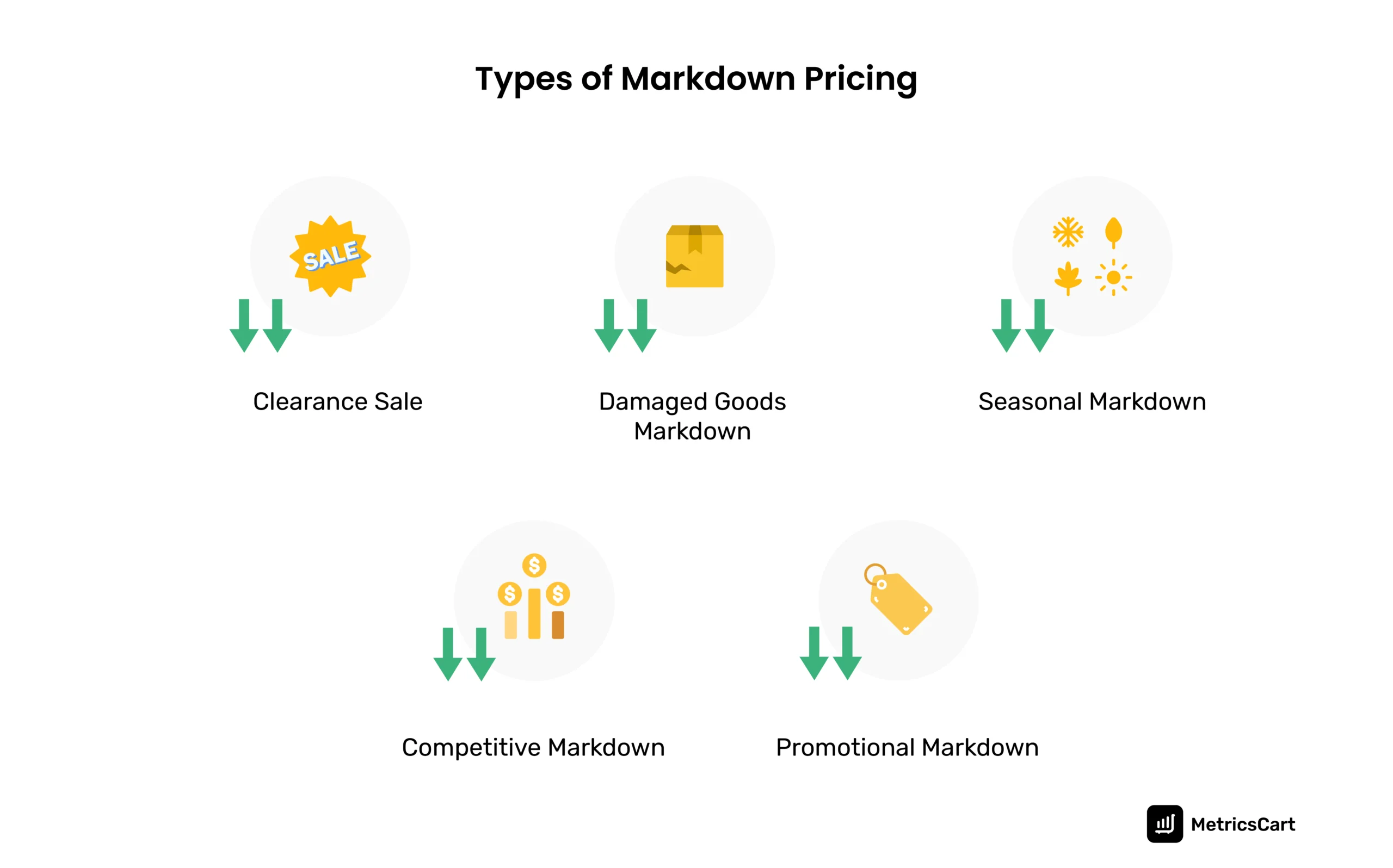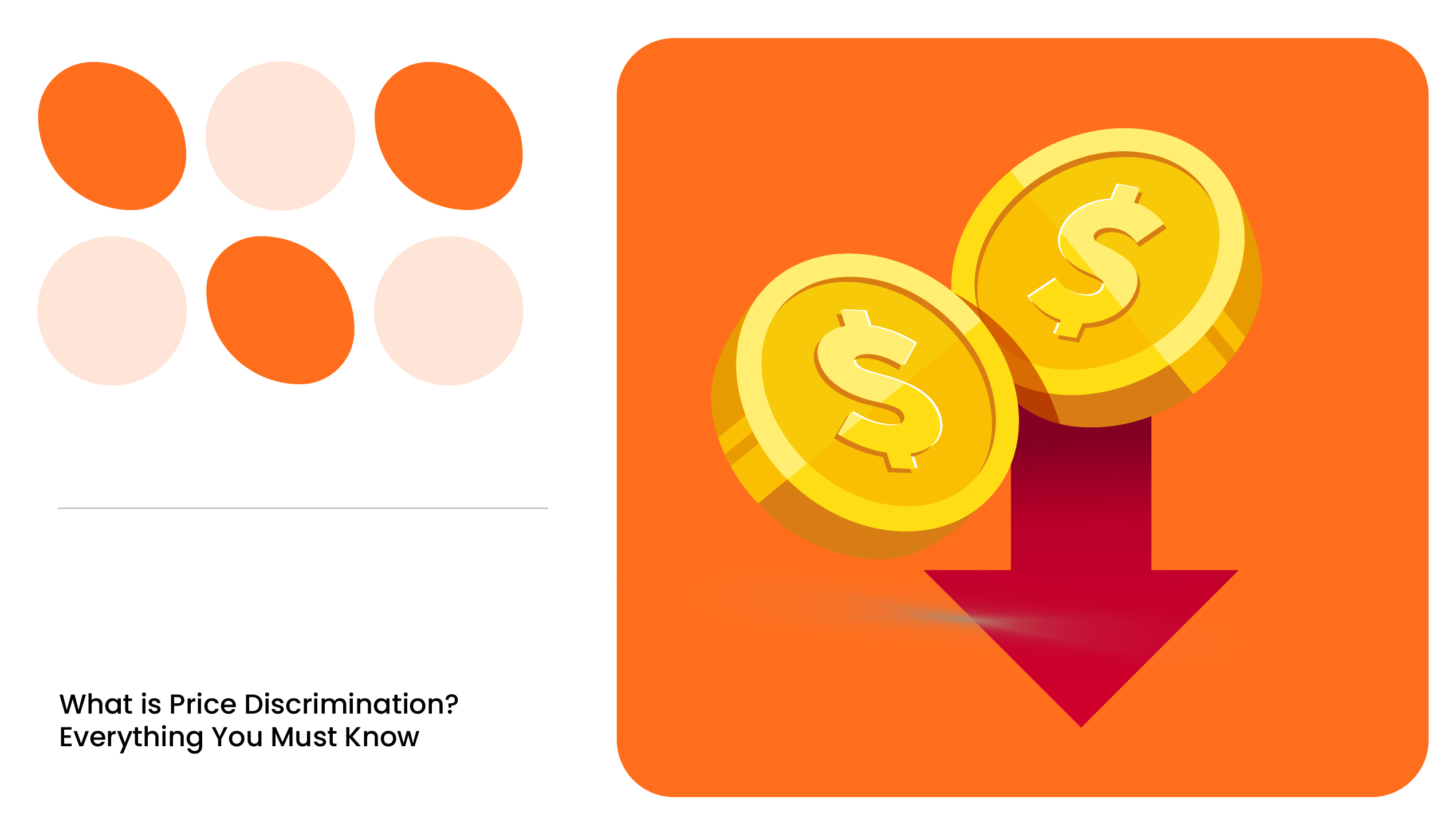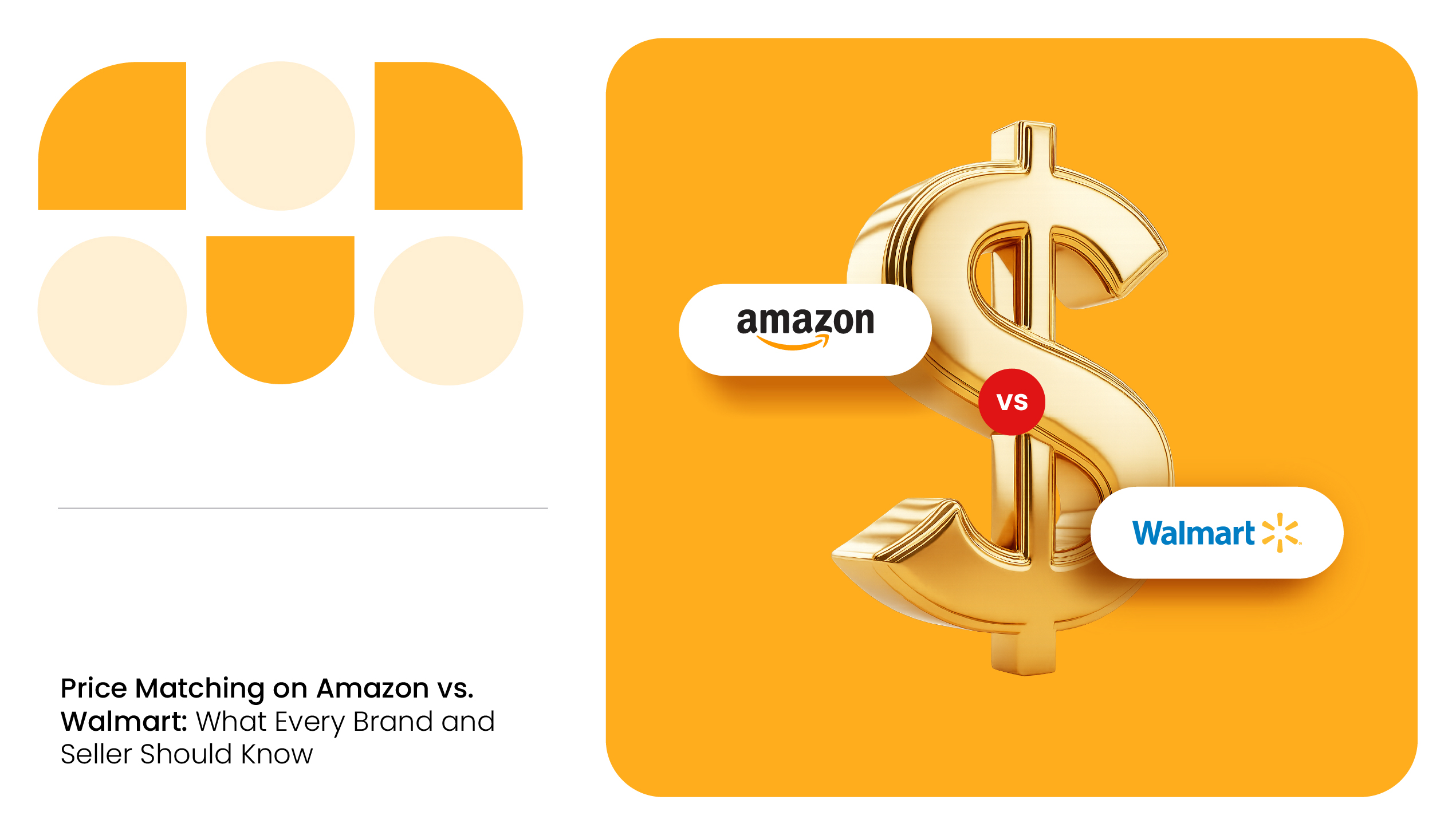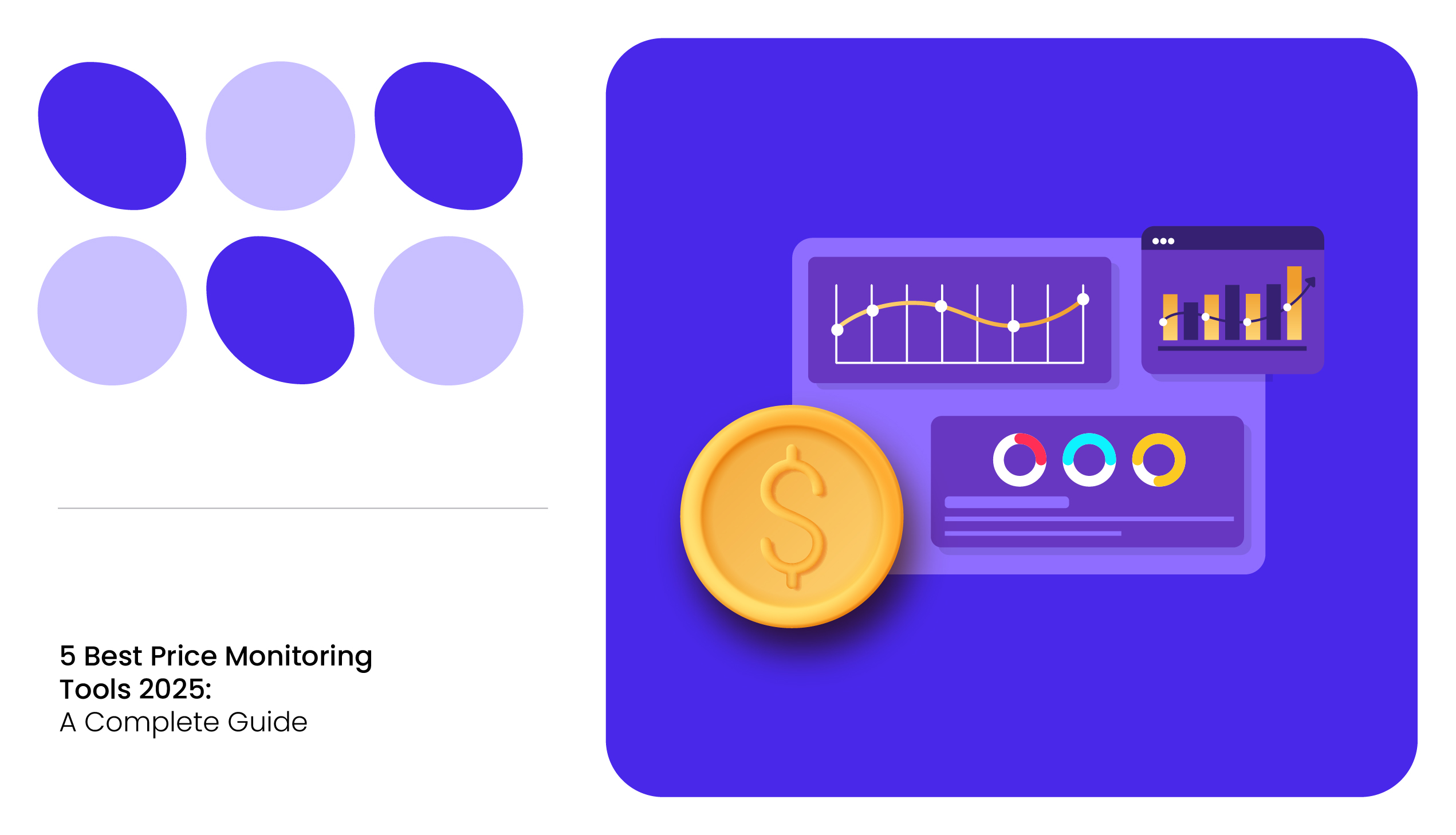Since 2022, supply chain concerns have begun to normalize. There has been a shift in the choices of goods bought during the pandemic and now, leaving many retailers with excess inventory. A markdown pricing strategy stimulates customer demand for those piled-up goods in such scenarios.
What is Markdown Pricing?
When retailers deliberately reduce the selling price of retail merchandise, it is called price markdown or markdown pricing.
Retailers use price markdown tactics to:
- Minimize carrying costs by clearing out the slow-moving inventory
- Sell the stock before the products surpass their expiration date
- Dispose of last season’s collection and make room for new seasonal products
Difference Between Discount Price and Markdown Price
Every markdown is a discount, but not every discount is a price markdown.
| Discount Price | Markdown Price |
|---|---|
| Discount is a limited-time promotion that creates an urgency to buy and drive quick sales | Markdown pricing is a permanent change in the selling price to clear the shelves of excess inventory |
| After the promotional period, the reduced price often returns to its original | A markdown price doesn't usually revert to its original price |
| Retailers' purpose is to create a buzz and delight customers with a good deal | Markdown pricing helps retailers liquidate their inventory and attract customers with low prices |
| Also referred to as promotional pricing | Also known as price markdown or clearance sale price |
Shortlisting Products for Price Markdown
Assigning price markdowns on products is a critical decision in retail. Delving into inventory data is retailers’ primary method to comprehend excess inventory.
- Tracking product data for an extended period helps to identify products that are lagging in sales
- Considering market trends is helpful in pinpointing items that might become obsolete
- Tracking inventory before and after the price change aids in gauging the success of markdown pricing
Types of Markdown Pricing
Retailers with a holistic view and understanding of the factors affecting each SKU are better positioned to develop a successful markdown pricing strategy. Besides common markdown strategies, online retailers who perform SKU rationalization set price markdowns on selected underperforming SKUs.

Clearance Sale
When a store closes or when retailers do not plan to stock the same goods again, they are put on clearance sale to free up shelves of excess inventory.
Damaged Goods Markdown
Retailers mark the price of products with damaged packaging or minor defects/dirt on clothing to recover the cost.
Seasonal Markdown
Seasonal markdown is to clear out seasonal inventory and make room for new collections.
Competitive Markdowns
Minimal markdown prices are set on some products to retain customers and prevent them from drifting toward a competitor due to price factors.
Promotional Markdown
Retailers implement promotional markdowns to create a sense of urgency and encourage customers to purchase discounted goods. Various forms of promotional pricing are BOGO, percentage discounts, etc.
Some retailers offer additional discounts to markdowns if a customer buys in bulk.
Examples of Markdown Pricing Strategy
Businesses use a price markdown strategy as a quick way to shed excess inventory. According to McKinsey’s US Sentiment Survey 2022, customer demand for products like coffeemakers, loungewear, furniture, and exercise bikes spiraled down post-COVID. These items piled up in stores as the demand for luggage and cosmetics increased.
Banana Republic Factory Retail Model Sells Brand’s Markdown Goods
Banana Republic, a fashion-forward brand, often delights its customers with seasonal markdowns in its online and offline factory outlets.
To differentiate its merchandise, the brand sells new collections in its regular store, and the factory outlet store stocks second-quality goods with minor damages or the previous season’s stock at a lower price.
IKEA Deploys Price Markdown Strategy for its Home Furnishings in 2024
In 2022, IKEA increased the prices of its goods. As inflation slowed and the cost of raw materials reduced, the brand announced price markdowns on many of its products.
According to Tolga Öncü, head of retail at Ingka Group, the outcome of the markdown that began in Europe in September 2023 is positive. The company experienced an increase in customers and items per basket.
Expecting price-sensitive customers to come over and over again in the US, the company is implementing markdowns on hundreds of products from March 2024.
Pros and Cons of Markdown Pricing
Pros
- Improves cash flow to re-invest in inventory that will perform
- Recoup some profit from unsold goods that take up valuable space
- Businesses using a markdown pricing strategy may stand out by establishing a reputation for offering value
Cons
- A ‘one price fits all’ approach in markdown strategy reduces the retailer’s gross profit margin
- Poorly planned or interpreted markdowns negatively impact the bottom line
- Both deeper markdowns and non-persuasive price reductions are ineffective
Read more: Best Pricing Strategies for E-Commerce That Help Scale Business
Monitor Pricing to Measure the Success of Price Markdown
Judiciously using price markdowns with strategic insights on a few slow-moving products may help retailers earn profits.
MetricsCart’s price monitoring service can help:
- Brands to keep a check on the third-party sellers that are not violating MAP policy
- Monitor competitors’ prices for their best-selling products
- Retailers to track the pricing at which the products sell the most
- Watch out for slow-moving products that are highly priced compared to competitors
Associate with MetricsCart for all your digital shelf analytics needs.







